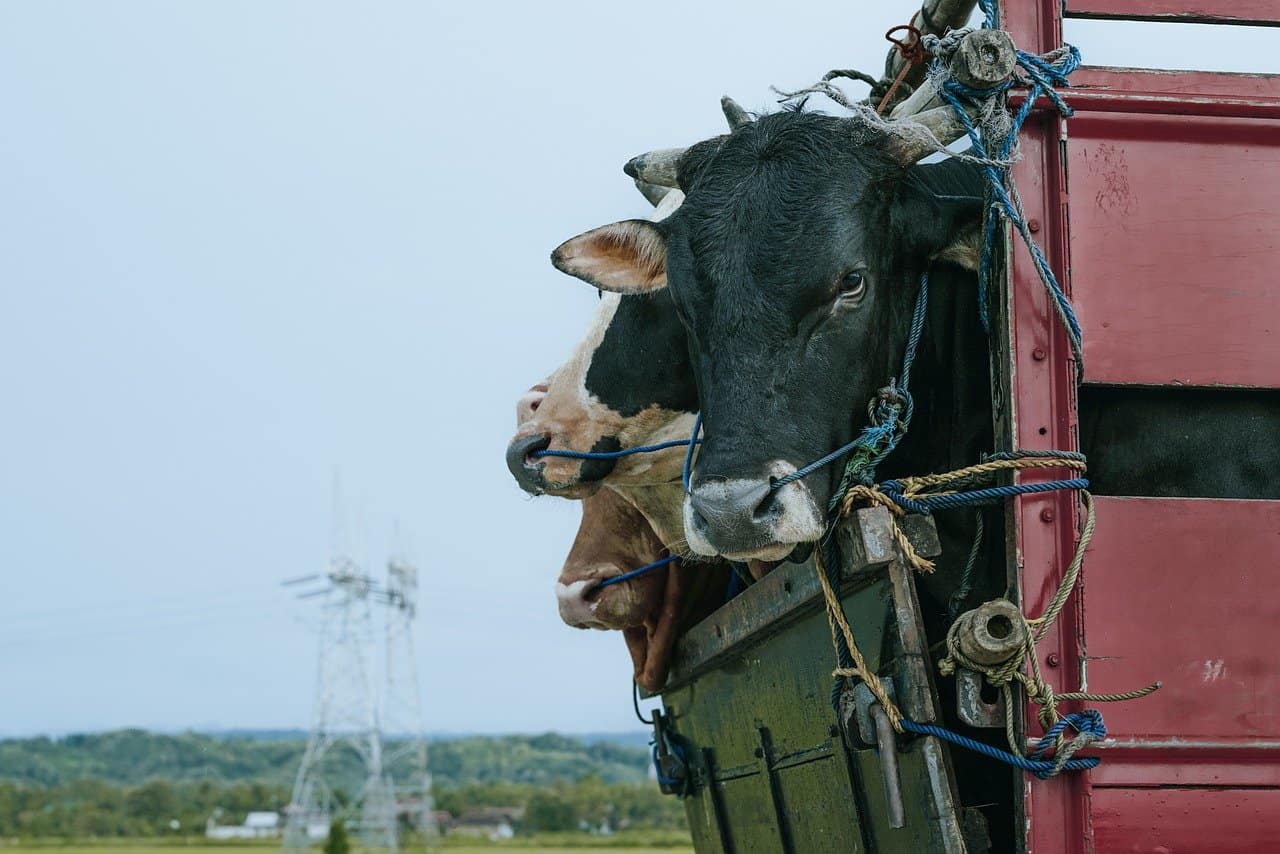Livestock transport is a major part of agricultural production, not to mention a lucrative niche for many truckers. The demand is high for livestock transporters, but by how much?
According to the International Livestock Research Institute, livestock contributes about 40% of the agricultural gross domestic product (GDP) globally. Within North America alone, livestock production makes up just under 6% of the total U.S. GDP.
If you have the right temperament to work with animal transport, keep reading to learn about everything you need to know before becoming a livestock transporter.
What Are the Responsibilities of Livestock Haulers?
The responsibilities of livestock transporters include the safe and efficient transport of livestock from a farm or a market to another location. Most often, this involves livestock transportation to processing plants, though livestock transporters can also move animals that have been sold to another farm.
Another reason is for recreational events, like rodeos. Regardless of the final destination, livestock transporters must maintain their trucks and keep their equipment in excellent condition to maintain safety and sanitation standards as they pertain to animal transport. Drivers might be asked to assist in either loading or unloading the animals, although that is not officially included in most jobs.
Livestock transporters need to be comfortable with animals, especially when it comes to working with and handling animals. A patient and flexible personality, as well as a careful driving style, are also important when it comes to being a successful livestock hauler.
How Much Do Livestock Haulers Make?
The amount of money that livestock haulers make will depend on where they work regionally, the type of livestock being hauled, the distance of the trip, the equipment being used and your experience level as livestock transporters.
According to Payscale, livestock transporters earned an average of $41,000 per year as of September 2022. Ziprecruiter notes a much wider range, stating that they make anywhere from $22,000 to $82,500 per year. More specifically, over 50% of livestock transporters or haulers earn between $46,000 and $68,000 per year.
Example of Livestock Hauling Jobs
Livestock hauling is a broad category. The type of livestock, the distance and the type of trailer all create unique specializations within livestock hauling jobs. Various livestock transporters will haul a wide array of livestock.
Some common livestock trucking jobs include the following:
- Cattle hauler
- Small livestock hauler
- Pig hauler
- Rodeo livestock hauler
3 Types of Livestock Trailers
Not all livestock is transported in the same type of trailer. For certain livestock, you must have a specific trailer, while other types of livestock require other trailers.
Livestock trailers are generally constructed from aluminum or steel. They usually have one, two or multiple floors. Here are the three most common types of trailers used by livestock transporters.
Enclosed Livestock Trailers
Enclosed livestock trailers are most commonly used for the sake of transporting cattle, as they are safer and more stable than other livestock trailers. An enclosed livestock trailer, as the name implies, is covered on all sides. There are air vents and holes that allow airflow for the animals.
Fence Livestock Trailers
A fence livestock trailer is uncovered. The animals are exposed to the elements. As the name implies, the trailer bed is surrounded by a high fence, which is usually made of metal and designed to enclose livestock.
A fence livestock trailer has two major advantages. First, it is cheaper and lighter than other types of livestock trailers. Fence livestock trailers are also easier to clean than enclosed or van livestock trailers. Due to its open design, the fence livestock trailer is used most commonly in regions with a mild climate.
Van Livestock Trailers
Van livestock trailers are used to transport high-value animals and delicate livestock. Van livestock trailers can also be used when transporting horses or cattle for sporting events.
A van livestock trailer offers the most protection for livestock, as the cabin can keep the temperature stable. Animals can be protected by this type of van, ensuring close care and attention, including stable ambient conditions during the transportation process while preventing illness during transport.
Permits Needed For Transporting Livestock
In most states, drivers do not need additional endorsements or certifications to transport livestock. A Class A CDL is sufficient if you want to become a livestock transporter.
Depending on the type of livestock in transport, the USDA may require individual animal certification or a certification of the number of animals being transported as well as the purpose of the trip.
- The number of animals covered by the certificate
- The purpose of the animals’ movement
- Origin and destination
- The consignor and the consignee
- A statement from a certified veterinarian
- Indication that the animals have no history of disease
Livestock Hauling Tips
Livestock hauling is vastly different from hauling boxes of non-living items to stores. Live animals need extra care both when loading animals into the vehicle and while driving the animals to their final destination. As a livestock transporter, you’ll also need to adapt your schedule to protect the animals in the event of extreme weather, like wind, heat or freezing temperatures.
Inspect Your Vehicle
It is essential to double-check your vehicle and your trailer. Check your brakes, tires, lights and electric wiring connections. Also, ensure that the trailer is tied correctly.
Ideally, it is best to perform a full safety inspection of major functions before each load. Be sure to maintain a good level of trailer cleanliness to meet animal sanitation guidelines as well.
Usually, the farmer or consignee will also perform an inspection of the trailer. If there are any safety or cleanliness issues, you should fix them before arriving for your next pick-up.
Properly Load Your Trailer
When loading livestock, it’s important to separate the animals correctly. This prevents injuries during transport and also ensures that certain animals won’t harm each other.
Some animals will balk during the loading process, so experience working with livestock can make it easier for you to load animals safely. Additionally, before you become a livestock transporter, you need to know how to load livestock and ensure the animals have enough water for the duration of the trip. For longer trips, you’ll also need to ensure that the animals have access to food.
Drive Safely
Driving a large trailer full of animals is vastly different from transporting boxes or inanimate objects. It’s of utmost importance that you drive safely. Some estimates say that cattle find their balance in transport only after an hour.
For all animal transport, it is important to turn corners gently. Be careful when you accelerate and decelerate as well. And of course, remember to increase your following distance, maintain legal speeds and follow the rules of the road.
Final Tips For Livestock Transporters
If you’re interested in becoming a livestock transporter and you already have a CDL Class A license, one of the remaining steps is to familiarize yourself with livestock. Ensure you understand the attention and flexibility that it takes to transport animals. Then, be sure to check if your state or the states you plan to work in require any additional certifications.
Transporting livestock can be a fulfilling and lucrative career. If you enjoy both driving long distances and working with animals, it may be an ideal fit. Many livestock transport jobs aren’t long-haul occupations, making it an attractive option for truckers who want to be home at night more often than not.
FAQ
When transporting livestock, you need to allow the animals adequate space, without giving them too much space, to increase safety in transport. You’ll also need to ensure they have water and food. Drive safely, and make sure they are not harmed by extreme temperatures or wind.
Generally speaking, you will usually need an animal transport certificate, according to the USDA. Depending on the type of animal being transported, that may be a certificate for a whole load or for an individual animal.
To reduce stress on cattle in transport, avoid hot-shot use, loud noises and noisy equipment. Ensure that animals have a safe amount of space in the trailer so that they aren’t overcrowded, have water and receive adequate protection. Then, be sure to drive slowly and safely.


